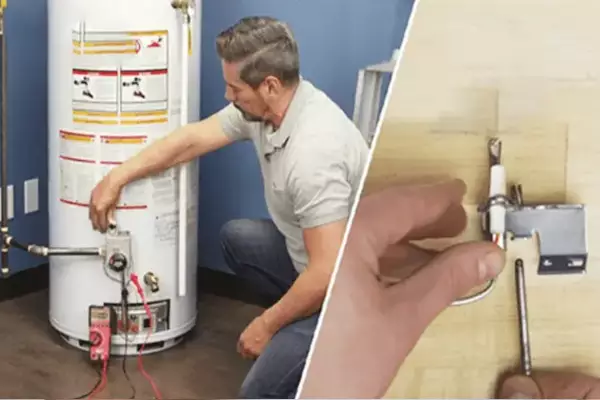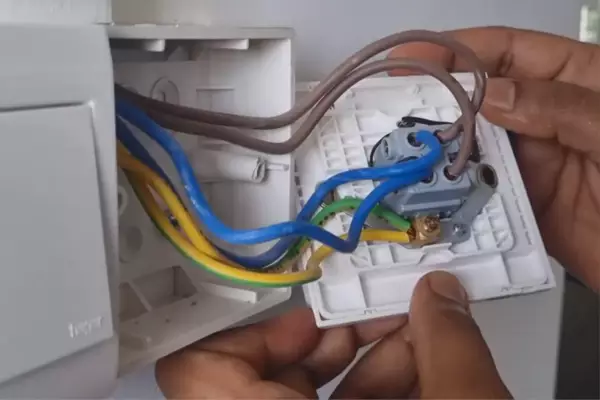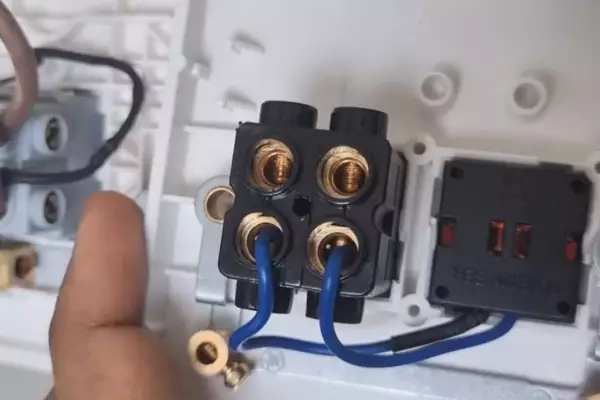The thermal switch in a water heater plays a crucial role in maintaining the safety of your device. This component, while often overlooked, has a profound impact on the performance and longevity of your appliance. It’s a protective mechanism that safeguards against overheating and potential subsequent hazards.
However, there may be situations where the thermal switch malfunctions, hindering the normal operation of your water heater. In such cases, knowing how to bypass the thermal switch can be a handy skill. Bypassing a thermal switch requires an understanding of the water heater’s components and a step-by-step methodical approach.
It’s also important to remember the associated risks and complications. Bypassing the thermal switch is not a permanent solution, rather, it’s a temporary measure that can get your water heater up and running until you can get the component replaced or repaired by a professional.
Contents
Basics of a Water Heater
Components and their Functions
A typical water heater comprises several components, each contributing to its overall functionality. The main components include a tank, heating elements, drain valve, pressure relief valve, and the thermal switch. The thermal switch, in particular, is a safety device that shuts off power to the heater in case of overheating.
Role of the Thermal Switch
The thermal switch is a crucial component, primarily designed to prevent fire hazards. When the water heater’s temperature exceeds a set limit, the thermal switch trips and interrupts the power supply, effectively preventing any further increase in temperature.

Whirlpool Water Heater Thermal Switch
Whirlpool, a well-known brand in the household appliances industry, offers a variety of water heaters, each equipped with a thermal switch. This thermal switch, located on the exterior panel of the unit, serves as an essential safety feature.
When functioning correctly, it can sense when the temperature of the water heater crosses a safe limit and responds by disrupting the electrical circuit. This immediate action prevents any further increase in temperature, ensuring the appliance doesn’t overheat or cause any fire hazards.
Whirlpool’s Unique Safety Feature
Whirlpool water heaters are revered for their innovative design and safety features. The thermal switch, in particular, is an integral part of their safety assurance to users. It is designed to provide a seamless heating experience, safeguarding the unit and the home from potential fire accidents that could result from overheating.
Common Issues with Whirlpool Thermal Switch
Like any other mechanical component, the thermal switch in a Whirlpool water heater can also face issues. Some common problems include tripping due to faulty wiring or a malfunctioning heating element. At times, a defective thermal switch may repeatedly trip, interrupting the normal operation of the heater. Such signs indicate that the switch needs attention and possibly replacement.
Precautions Before Bypassing
Before proceeding with the bypassing process, it is crucial to take necessary safety precautions. Dealing with electrical appliances, especially ones dealing with high temperatures, requires caution.
Power Supply Disconnection
Always disconnect the power supply to the water heater before beginning. This reduces the risk of electric shocks during the bypassing process.
Use of Protective Equipment
Ensure you have protective gloves and safety glasses on to protect your hands and eyes. Working with electrical connections can sometimes cause sparks, so this step is necessary.
About the Implications
While bypassing a thermal switch can offer a quick fix to get your water heater running again, it is essential to remember that it is not a long-term solution. Operating a heater without an active thermal switch can expose it to potential overheating, which can lead to severe damage or fire hazards.

Bypassing a Thermal Switch
Once the necessary precautions are in place, the actual process of bypassing the thermal switch can begin.
Identifying the Thermal Switch
Identifying the thermal switch is the first step in the process. The switch is generally a small, circular component located on the exterior casing of the heater, typically marked for easy identification.
Steps to Bypass
Here’s a step-by-step guide to bypassing a thermal switch:
- Make sure the power supply is disconnected.
- Identify the thermal switch on the heater. It usually has two wire connections leading into it.
- Using an appropriate tool, disconnect the wires attached to the switch. Be careful not to damage the wires.
- Once disconnected, join these wires together, effectively bypassing the switch.
- After securely connecting the wires, wrap them with electrical tape to prevent any accidental short circuits.
- Once you have bypassed the switch, restore the power supply. The heater should resume its normal operation, although now without the safety mechanism of the thermal switch.
TCO Switch Water Heater
In water heater terminologies, the Thermal Cut Off (TCO) switch is synonymous with the thermal switch. This switch functions as a safety guard to prevent overheating in water heaters.
About the TCO Switch
The TCO switch, like a thermal switch, is a fail-safe mechanism that acts swiftly in situations where the temperature crosses a safe limit. By disrupting the power circuit, the TCO switch prevents any additional heat generation in the unit.
Process to Bypass TCO Switch
Bypassing a TCO switch involves similar steps as bypassing a thermal switch. The primary steps include locating the TCO switch, disconnecting the wires, connecting the wires together to bypass the switch, and then carefully restoring the power supply.
How to Bypass a Thermocouple on a Water Heater
The thermocouple is another critical component of a water heater, particularly in gas heaters. It functions as a safety device, monitoring the status of the pilot light and controlling the gas supply accordingly.
The Role of Thermocouple in Water Heaters
The thermocouple is constantly monitoring the pilot light in a gas water heater. If the pilot light goes out, the thermocouple senses this change and immediately shuts off the gas supply to prevent gas leakage, thus preventing potential explosions.
Bypassing the Thermocouple: A Step-by-step Guide
Though it’s generally not recommended due to the safety implications, there might be situations where bypassing the thermocouple becomes necessary. Here’s how you can do it:
- Locate the thermocouple. It’s usually connected to the gas control valve and has a thin metal rod that extends into the heater.
- Disconnect the thermocouple from the gas control valve.
- Next, you’ll need to create a direct connection between the pilot light and the main gas line, effectively bypassing the thermocouple.
- Once done, test the setup by lighting the pilot light. If the pilot light stays on, the bypass has been successful.

Thermal Switch Gas Water Heater
Thermal Switch in Gas Heaters
In a gas water heater, the thermal switch functions in the same manner as in electric water heaters. It prevents overheating by interrupting the gas supply when the temperature exceeds a certain limit.
Steps to Bypass Thermal Switch on Gas Heater
The steps to bypass a thermal switch on a gas water heater are identical to those on an electric water heater. However, additional care is required due to the involvement of a gas supply.
After Bypassing the Thermal Switch
What to Expect
After bypassing the thermal switch, your water heater should operate normally. However, it will lack the safety mechanism provided by the thermal switch.
Long-term Implications
Operating your water heater without a functional thermal switch can be risky in the long run. It’s important to have the thermal switch replaced or repaired by a professional as soon as possible.
Professional Assistance
When to Seek Professional Help
If you’re unsure about bypassing the thermal switch yourself, it’s best to seek professional assistance. The process involves handling electrical connections, and if not done properly, can lead to complications.
The Role of a Professional in Bypassing
A professional can accurately diagnose the issue with your water heater and perform the necessary repairs or replacements. They can also safely bypass the thermal switch, reducing the risk of electrical hazards.
Frequently Asked Questions
Can a faulty thermal switch cause a water heater to stop working?
Yes, a faulty thermal switch can cause your water heater to stop working. The thermal switch interrupts the power supply when it detects an overheating situation, and if it’s malfunctioning, it could be incorrectly detecting an overheating condition.
Can I permanently operate my water heater without a thermal switch?
While it’s technically possible, it’s not recommended to operate a water heater without a functioning thermal switch for a prolonged period. The thermal switch is a safety device that prevents overheating and potential fire hazards.
Is it dangerous to bypass a thermal switch on a water heater?
Bypassing a thermal switch on a water heater should only be a temporary measure and should be done with caution. The thermal switch is a safety feature, and bypassing it eliminates this safety layer, potentially leading to overheating and other hazards.
Conclusion
Bypassing a thermal switch in a water heater is a process that can be handy when dealing with a malfunctioning switch. However, due to the important safety role that this component plays, it’s not a task to be taken lightly.
Remember that bypassing the thermal switch is only a temporary fix. Continued operation without this safety mechanism can lead to overheating and pose a significant risk. Therefore, it’s always recommended to have the faulty thermal switch repaired or replaced by a professional as soon as possible.
While this guide provides you with the necessary information to bypass the thermal switch, if at any point you feel uncertain, it’s best to seek professional assistance. Safety should always be the top priority when handling electrical appliances, and a professional can ensure that the task is completed safely and effectively.

